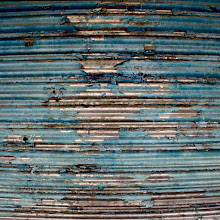
Subconsciously, I have been steeping myself in a wide range of representations of the South for as long as I can remember. Recently, I've become aware of the progression between the Old and the New South and how they exist and intermingle today. Two weeks ago, I watched A Street Car Named Desire and then obsessively gathered information about the play, the movie and Tennessee Williams. It lead me back in time to Gone with the Wind which, despite it's epic running time of 238 minutes, was a gorgeous trip into Hollywood's Antebellum South. I realize Hollywood isn't the best way to absorb and learn about history but the best fiction is most always based on fact.
In the vein of the both of the films mentioned above, Monday evening, I had the pleasure of viewing Searching for the Wrong-Eyed Jesus. Released in 2003, it is a road trip guided by Jim White and a 1970 Chevy Impalla. It is part documentary, part music video, part loosely constructed narrative about the elusive and fascinating culture of the South. We meet the writer Harry Crews along a dirt road and he leans into the back the Impalla, his head hovering right inside the car. I wouldn't call it a documentary movie, per say. It's more like a guided tour.
There aren't enough words for me to express my awe and adoration of this film. Visually, it knocked me off my feet. The photography and direction in this movie is precise and beautiful; it sucks you further into the landscape, into the story that's being told so quietly you don't notice until the movie is over that you're sitting on a couch in New England.
Musically, it features an extremely talented spattering of musicians. I'm just going to suggest that one should definately peruse the music section of the website. I've had it on repeat since I downloaded the soundtrack the same night I watched the movie.
Conceptually, it is smart. It doesn't point any one thing to define the "Southern experience" or try to explain what it means to be "Southern". Jim and the cameras take you to a junkyard, a coal mine, a juke joint on a Saturday night, a passionate Pentecostal Sunday church service, a restaurant that serves fried catfish and redemption and a mountain gospel church. In every place that you're introduced to, the movie goes "look at this. look at these people and listen to what they have to say." The film not only examines the South but also honors it. While there are some stereotypes represented in the film, it feels more of a way to acknowledge them as real people and not the nasty, classist representations that are normally seen of them.
I know the reasons that I am drawn to this film are because it is a perfect demonstration of what I want to do with my work. It examines a place that is unique and rich in culture, despite the world-at-large saying "what you experience and your life and your art and your music isn't culture". It is both dark and beautiful, ugly and fascinating.

